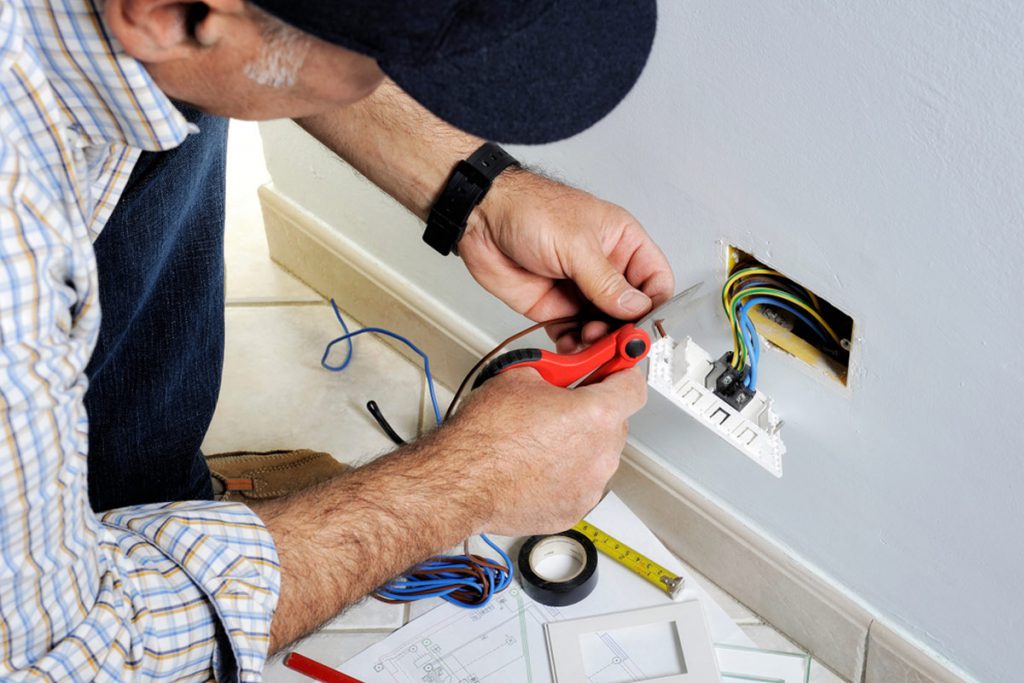
Top Tips for Proper Electrical Maintenance
Proper electrical maintenance is crucial for your home’s safety, functionality, and energy efficiency. Neglecting electrical maintenance can lead to hazardous situations, costly repairs, and wasted energy. In this blog post, we will explore essential tips and practices to help you maintain a safe and efficient electrical system in your home. By following these guidelines, you can protect your family, prolong the lifespan of your electrical components, and reduce your energy consumption. Let’s dive in and discover how you can ensure safety and efficiency through electrical maintenance.
Regular electrical system inspection and testing is crucial for identifying potential cipf-es.org issues, ensuring safety, and maintaining optimal functionality. Here are some key points to consider regarding inspection and testing:
- Importance of Professional Inspections: Hire a qualified electrician to regularly inspect your electrical system. They have the knowledge and expertise to identify hidden problems and ensure compliance with electrical codes and safety standards.
- Frequency of Inspections: The frequency of inspections may vary depending on factors such as the age of your home, the condition of the electrical system, and any previous issues. As a general guideline, consider scheduling an inspection every 3 to 5 years or as a professional recommends.
- Identifying Loose Connections: Loose connections can lead to electrical arcing, overheating, and potential fire hazards. During an inspection, the electrician will check for loose wires, terminals, and connections in outlets, switches, and electrical panels.
- Testing Ground Fault Circuit Interrupters (GFCIs): GFCIs are designed to protect against electrical shocks in areas where water is present, such as bathrooms, kitchens, and outdoor outlets. Regular testing of GFCIs ensures they are functioning correctly. Press the “Test” button and make sure the power is disconnected. Then, press the “Reset” button to restore power.
- Checking Arc Fault Circuit Interrupters (AFCIs): AFCIs protect against electrical arcs, which can cause fires. These devices are typically found in bedrooms, living rooms, and other living spaces. During an inspection, the electrician will test AFCIs to ensure they are operational.
- Assessing Electrical Panels: The electrical panel is the heart of your electrical system. The electrician will inspect the panel for signs of wear, damage, or overheating. They will also ensure proper labeling, adequate capacity, and appropriate breaker configurations.
- Outlet and Switch Testing: All outlets and switches should be tested for proper functionality. The electrician will check for loose connections, proper grounding, and any signs of damage or wear. They will also verify that the switches are working correctly.
- Load Testing: Load testing involves assessing the capacity of your electrical system to handle the expected electrical load. The electrician may perform load calculations to ensure your system is not overloaded, which can lead to safety hazards and electrical failures.
- Inspecting Wiring: The electrician will examine visible wiring for signs of damage, wear, or deterioration. They will identify any outdated or unsafe wiring systems, such as knob-and-tube or aluminum wiring, that may require replacement.
- Documenting Findings: The electrician should provide a detailed report outlining their findings, recommendations, and any necessary repairs or upgrades. This documentation records the inspection and can be useful for future reference or when selling the property.
Upgrading outdated wiring is an important aspect of electrical maintenance and can significantly enhance the safety and efficiency of your electrical system. Here are key points to consider when upgrading outdated wiring:
- Identify Outdated Wiring Systems: Determine if your home has outdated wiring systems, such as knob-and-tube wiring or aluminum wiring. These wiring types are more susceptible to wear, degradation, and safety issues compared to modern wiring systems.
- Knob-and-Tube Wiring: Knob-and-tube wiring was commonly used in homes built before the 1950s. It consists of porcelain knobs, tubes, and exposed copper wiring. Due to its age and lack of grounding, knob-and-tube wiring is considered less safe for modern electrical needs. Consider upgrading this wiring to ensure safety and compliance with current electrical codes.
- Aluminum Wiring: Aluminum wiring was prevalent in homes built during the 1960s and 1970s. However, it has a higher risk of overheating and causing fire hazards due to its tendency to expand and contract with temperature changes. Upgrading aluminum wiring to copper wiring or using approved aluminum wiring repair methods can mitigate safety concerns.
- Consult a Professional Electrician: It’s essential to consult a licensed and experienced electrician when upgrading outdated wiring. They can assess the condition of your existing wiring, determine the necessary upgrades, and provide expert guidance throughout the process.
- Complete Rewiring vs. Partial Upgrades: In some cases, a complete rewiring of the electrical system may be necessary, especially for older homes with extensive outdated wiring. However, partial upgrades may be sufficient if only specific sections or circuits require attention. Your electrician can evaluate the best approach based on your home’s needs and your budget.
- Safety Considerations: Upgrading outdated wiring enhances safety by reducing the risk of electrical fires, overheating, and electrical shocks. Modern wiring systems, such as copper wiring with grounding, provide better protection and are designed to handle the electrical demands of modern households.
- Code Compliance: Upgrading outdated wiring ensures compliance with current electrical codes and regulations. It is important for the safety of your home and may be required if you plan to sell your property or make other renovations that involve electrical work.
- Professional Installation: A qualified electrician should always carry out wiring upgrades. They have the knowledge, skills, and tools to handle the wiring upgrade safely and efficiently. They will follow proper installation practices and ensure that all connections are secure and up to code.
- Additional Upgrades: While upgrading wiring, consider incorporating other electrical upgrades, such as adding additional outlets, installing ground fault circuit interrupters (GFCIs), or upgrading to modern electrical panels with improved safety features.
- Budget and Planning: Discuss your budget and expectations with the electrician during the planning phase. They can provide cost estimates, help prioritize the necessary upgrades, and develop a timeline for the project.
Surge protection is an important aspect of electrical safety. Surges are sudden and temporary increases in voltage that can occur in electrical systems. Lightning strikes, power outages, or the operation of high-power electrical devices can cause these surges.
Without proper surge protection, these voltage spikes can damage or destroy sensitive electronic equipment, create fire hazards, and risk personal safety. Here are some measures you can take to enhance surge protection and ensure electrical safety:



